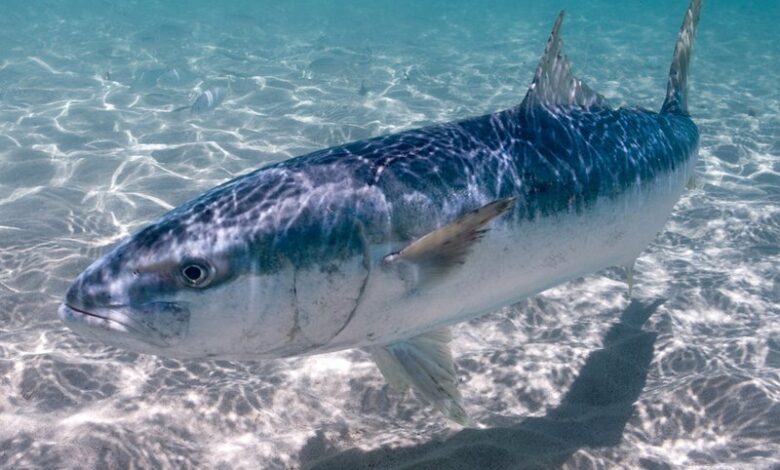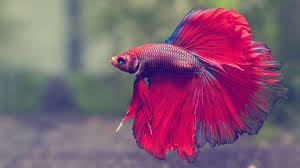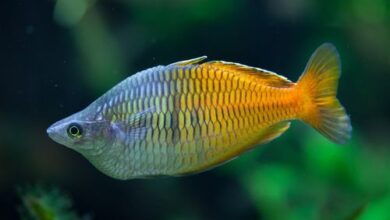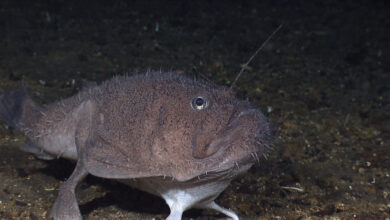A Guide for Identifying and Learning About Australia’s Iconic Saltwater Gamefish-Introducing the Kingfish

FAQ ABOUT The Kingfish
Is kingfish a good fish to eat?
Kingfish is definitely one of the best tablefish you can catch. Its mild, sweet, flaky white flesh is perfectly suited for a wide variety of preparations. Not only does it taste delicious, kingfish is also exceptionally healthy and nutritious. Its meat is very lean, containing only about 1-2% fat. This makes it low in calories but high in protein, essential vitamins, and minerals. Kingfish is also a good source of omega-3 fatty acids, containing levels comparable to those of fatty fish like salmon.
As an upper-level predator that preys mainly on fish and squid, kingfish do not accumulate toxic metals or other contaminants like some bottom-feeding fish can. Proper handling and icing ensure the flesh stays firm, moist, and sweet-tasting for several days. This gives home cooks the flexibility to enjoy fresh kingfish in multiple meals throughout the week. Both adults and children alike rave about kingfish’s tender texture and mild flavor. It’s really an ideal tablefish by all measures.
What’s another name for kingfish?
While “kingfish” is the most common name used in southern Australia, this species is known by a few other regional identifiers to avoid confusion with related species.
In the far northern New South Wales and Queensland waters, “yellowtail” has become more popular in distinguishing kingfish from similar-looking yellowtail kingfish and other Seriola species found further north.
Interestingly, older generation fishos in some areas still refer to kingfish as “whiting” – a holdover name from when they were less distinguished from small sand whiting as juveniles.
A handful of other less frequently used names have emerged locally as well, such as “silver trevally.” However, none have caught on as widely as kingfish or yellowtail.
To be certain of the species, it’s best to use the scientific name Seriola lalandi. But for most Australians, kingfish or yellowtail suffice to identify this iconic gamefish.
Is kingfish expensive?
The price of fresh kingfish can vary depending on availability, season, and exact market or locale. However, in general, kingfish provide fairly good value for a prized tablefish.
Whole fresh fish directly from anglers typically sell for around $10-15 per kilogram at local fish markets during peak season. Larger premium specimens over 5kg sometimes achieve $20-25/kg prices.
By the time Kingfish reaches high-end restaurants and seafood shops in major cities, expect to pay $30-40/kg or more for quality skinless fillets and thick steaks. This premium pricing reflects the extra labor of filleting and often aging the meat.
Keep in mind kingfish prices from country towns will usually be towards the lower end, getting progressively higher the closer to urban areas with bigger demand. However, even at peak prices, kingfish is still quite affordable compared to many imported seafood alternatives.
With careful handling, the lean white flesh also keeps remarkably well for up to 4 days. So kingfish affords home cooks versatility in using it for multiple meals throughout the week – adding great value.
What’s the cleanest fish to eat?
When it comes to minimizing toxic contaminants like mercury, kingfish is certainly one of the cleanest and healthiest fish choices. As an apex predator high on the marine food chain, kingfish do not accumulate pollutants in their tissues like other bottom-feeding fish.
Some other great low-mercury options include wild salmon, sardines, anchovies, and Pacific oysters. Tilapia, catfish, and farmed trout also have negligible contaminant levels. Shellfish like mussels and clams filter feed and thus keep our waterways clean.
On the other end of the spectrum, predatory gamefish like marlin, shark, and orange roughy can bioaccumulate higher mercury due to their longevity. Some bottom feeders like carp, snapper, and barramundi from industrial waterways may also carry higher loads.
In summary, focusing seafood choices on wild-caught salmon, sardines, oysters, kingfish, and catfish provides excellent nutrition while minimizing toxic pollutants in every meal.
Is tilapia a kingfish?
No, tilapia is an entirely different species of fish than kingfish. Some key differences include:
- Tilapia belong to the cichlid family of freshwater fish, while kingfish are marine gamefish in the jack family.
- Tilapia have a more compressed oval body shape and smaller mouth compared to kingfish’s elongated cigar shape.
- Their coloration also differs greatly – tilapia are generally olive, gray or brownish, while kingfish have a silvery blue back and sides.
- Kingfish are native predators of Australian coastal waters, living their whole lives at sea. Tilapia are often farmed inland in fresh or brackish ponds.
- Both are mild white-fleshed tablefish, but kingfish have a subtly sweeter delicate flavor while tilapia is blander.
So while tilapia and kingfish are both popular culinary fish, they are quite distinct species adapted to totally different aquatic habitats. The scientific name for kingfish, Seriola lalandi, leaves no doubt about its correct identification.
What do kingfish eat?
As opportunistic carnivorous upper-level predators in coastalmarine ecosystems, kingfish have a varied diet that changes withtheir size, habitat and availability of different prey.
Juvenile kingfish primarily feast on small fish like anchovies, herring and garfish, as well asshoaling crustaceans like small shrimp. As they grow larger intoadults, their diet expands to include more vigorous bait like pilchards, mullet, squid and cuttlefish.
Occasionally, large specimens over 5kg have been found with small sharks and stingrays in their stomachs, displaying their top-position predatory capabilities. Kingfish readily strike lures and baits that resemble their usual menu of fast-moving pelagic species.
Kingfish, also commonly known as yellowtail or whiting in some areas, is an iconic saltwater gamefish found in the coastal waters surrounding Australia. With its fighting abilities and delicious white flesh, kingfish have long been a favorite target of anglers and seafood lovers.
Kingfish Background
Kingfish, or Seriola lalandi, belong to the jack family Carangidae. They are closely related to other popular gamefish like yellowtail kingfish and gemonsole. Adult kingfish have a distinct elongated silver body with dark blue backs and sometimes stripes along their sides. They have two separate dorsal fins, an anal fin, and a forked tail fin. On average, mature kingfish weigh between 2-10 kg, though much larger specimens over 15 kg have been caught on rod and line in Australian waters.
Kingfish Lifespan
Kingfish are relatively long-lived for a tablefish, with an expected lifespan of 15-20 years in the wild. However, most kingfish caught by anglers are five years old or younger. Larger, older kingfish tend to inhabit deeper offshore waters out of reach for most shore-based and boat anglers.
Kingfish Habitat and Distribution
Kingfish are found primarily along southern and eastern Australia, from central Queensland down to northern Western Australia and around Tasmania. They inhabit coastal and estuarine waters, preferring areas with structures like reefs, weed beds, jetties, and offshore wrecks. Young kingfish school together in shallow bays and estuaries, moving offshore as adults to areas up to 60 meters deep. While most abundant in temperate waters, kingfish have also been caught as far north as the Whitsunday Islands in tropical Queensland.
Kingfish Size
The average size range for kingfish caught by recreational anglers is 2-5 kg, though larger specimens over 10 kg are certainly possible. As mentioned, the IGFA all-tackle world record stood at just under 22 kg until recently, when it was surpassed by an enormous 24.3 kg kingfish that landed in New Zealand. Size varies greatly depending on location, with fish from NSW and Victoria generally larger on average than those from Queensland or Western Australia. Average size also fluctuates seasonally as fish follow spawning cycles.
Kingfish Price
With their popularity as a table fish, kingfish command good prices at seafood markets and restaurants when in season. On average, anglers can expect to get around $10-15/kg for whole fresh kingfish. Premium larger fish over 5 kg often fetch $20-25/kg. Filleted skinless kingfish steaks typically sell for around $30-40/kg or more. Of course, the further away a city is from major cities, the lower the market price tends to be. In general, kingfish provide an excellent opportunity for anglers to earn back some of their fishing costs.
Kingfish Benefits
Not only are kingfish incredibly fun to catch on light tackle, but they are also one of the healthiest and most sustainable table fish available. Kingfish meat is very lean, low in fat and calories, and high in protein, vitamins, and minerals. They contain heart-healthy omega-3 fatty acids comparable to salmon. As apex predators, kingfish also don’t accumulate mercury or other contaminants like some bottom-feeding fish. With careful handling and icing, whole fresh kingfish will be kept for 3-4 days, making them perfect for occasional meals throughout the week. Their mild, sweet, flaky white flesh appeals to both children and adults alike. It’s no wonder Australians love kingfish!
Kingfish Name
There has been some debate over the correct common name for Seriola lalandi, with different regions adopting various market names. Most generally, “kingfish” is used throughout southern Australia from Victoria to South Australia, Tasmania, and New Zealand. However, in Northern NSW and Queensland regions, they are commonly called “yellowtail” to avoid confusion with other Seriola species. Names like “whiting” or “silver trevally” have also popped up locally in places. To avoid any mix-ups, the scientific name Seriola lalandi is the surefire way to identify this particular species when discussing kingfish.
Kingfish Fishing Techniques
Now that we understand kingfish biology let’s look at effective fishing methods. Kingfish are targeted year-round by boat and shore-based anglers, but the best times are generally late spring through early autumn. They can be enticed with live baits like pilchards, squid, and mullet, as well as soft plastics, lures, and surface poppers. Top shore-fishing spots include jetties, estuaries, and rocky points adjacent to deeper waters out to a kilometer from shore. Popular boat techniques involve trolling lures along drop-offs, drifting baits over structures, and casting lures at surface activity. A light tackle around 2-4kg is ideal for good sport.
Identifying Kingfish
Being able to positively identify kingfish when targeting or handling is important. Beyond their distinct elongated silver body, look for the presence of two separate dorsal fins with dark spines, an anal fin, and a deeply forked tail. For certain identification in hand, examine the gill rakers – kingfish have long, slender gill rakers numbering 24-27 on the first-gill arch. Remember, similar-looking yellowtail kingfish have fewer gill rakers 18-22. Check the lateral line scale count, too, with kingfish having 95-110 scales. Properly identifying your catch ensures you know how best to handle and target this gamefish going forward.
Handling and Releasing Kingfish
With their fighting prowess and table quality, kingfish are certainly an enjoyable target for catch-and-release. Some tips for successful release include using circle hooks, playing with fish as quickly as possible, and handling with wet hands. Don’t remove the fish from the water – instead, gently slide the hook out, then support the fish facing into the current until it swims away strongly on its own before release. Following best practices means you can enjoy battling kingfish for many years to come while preserving the fishery.
Cooking and Preparing Kingfish
Now that you’ve gotten yourself a beautiful fresh kingfish, it’s time to turn it into a delicious meal! Kingfish lends itself to a variety of preparation methods, given its mild, flaky white flesh. Fillets or steaks can simply be pan-seared or baked with a squeeze of lemon. It’s also wonderfully crumbed, beer-battered, and fried. Thicker cuts are perfect on the barbecue. For whole fish, stuff and bake, poach in a wine or tomato-based broth, or fillet table-side for guests. Kingfish makes light, healthy sushi too. No matter your cooking style, fresh kingfish is always a winner that should be enjoyed often during the season!
Their sharp vision and speed allow kingfish to aggressively huntschooling bait throughout the water column. Observations byresearchers also suggest larger individuals may pursue solitaryprey animals like slipper lobsters sheltering on reef structures.
So, in summary, kingfish eat a variety of offshore prey reflecting their environment – from small baitfish and krill as juveniles tonimble squid and pelagic fish as larger trophy-size specimens tower over the food chain. A mixed diet enables their powerful swimming and fighting prowess, which is highly coveted by anglers.




